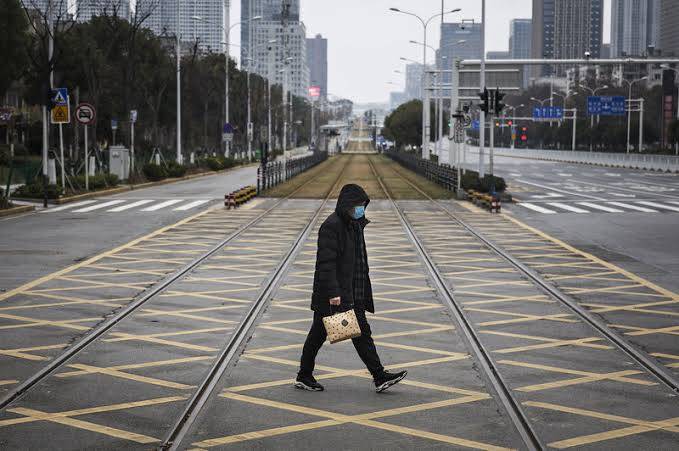COVID-19 has exposed the intrinsic vulnerability of urban centres around the globe. Density and connectivity, which are the hallmarks of city centres, are ruthlessly ambushed by Covid-19. The past couple of months have taught us that pandemics are anti-urban.
Globally, the millions of ‘new poor’ due to Covid-19 come from the metropolitans. Fast connectivity, mass transit, skyscrapers, plazas, and shopping malls, operating synchronously, facilitates the spread of contagions. With shelter-in-place ending in mostparts of the world, the question looms large for how to manage the impact of Covid-19 on urban areas?
How our relationship with the cities will be redefined?
Around the world, engineers, town planners, architects’ urban designers are contemplating the city’s infrastructure that will emerge in response to Covid-19. While cities and metropolitans boast of the health and education facilities, job opportunities,and a multitude of dwelling options, they come with a downside too - which in most of the cases go unaccounted for i.e. slums, informal workers, illegal immigrants, daily wagers and sex workers. These invisible, yet ubiquitous segments add to the fragility of the urban fabric. The majority of people who died in New York are the homeless or poor. In India, daily labourerssuffered the most.
On the other hand, the silver line of Covid-19 which reducing the pollution in cities will last as long as the industries remain shut. Once the industries start operating, the pollution will rise to the same level or may go even worse. Redesigning infrastructure requires cities to be pandemic resilient by containing contagion hot spots, reduced emissions, safe public transport, clean water, and sanitized public toilets.
Cities around the world, as they are opening up, are resorting to the new norm of social distancing, lesser interaction, remote working, and avoiding congregation. New York and Vancouver have begun closing down streets once reserved for cars to create more public space for the socially-distancing population. In Korea, the government offered green stimulus: giving incentives to industry for following tighter emission standards. Many countries are adopting a 4 days’ work week.
The rise of telecommunication and working from home has subsided the need for a shorter commuting distance. People will more likely to shift to the periphery of the cities as they work remotely from the comfort of their homes. This will cause lateral expansion and reduced population density in the city hubs. All these efforts aim at generating a healthier ecosystem for the urban centres and making them pandemic resilient.
In Pakistan, the lackadaisical strategy to fight the pandemiclacks a systematic approach; relying majorly on adhoc activities. As the lockdown is eased, caution is thrown out of the window, causing infections to increase exponentially. Hospitals reached to their capacity as Eid-ul-Azha approaches.
Having one of the most populated, polluted, and poverty-stricken cities in the world; Pakistan is powerlessly battling against the Covid-19 which has challenged conventional urban design and transportation. Continuing the old practices will aggravate the infection, economic turmoil, and healthcare crisis.
A policy overhaul is imperative
The solution lies in the use of technology. However, it is an uphill task in a country where science is not taken ‘seriously’and rational falls on the deaf ears. The areas hardest hit by theCovid-19 are not only the ones with high population density but also the ones where the population is poorly managed.Identifying hot spots is the first step to curtail the progress of pandemic as the government claims to do by smart lockdown: selective cordoning off localities.
Satellite imaginary, adaptive assessment technology, three-dimensional modeling, and population density data can indicate the probability of the spread of the virus in a particular neigbourhood. The areas having no record of data can be served with on-ground monitoring teams; taking samples and collecting information. This can help locate the potential hotspots and mitigate the progress of pandemic in urban centres by directingthe scarce resources where they are needed the most.
City transport is another major factor demanding a change. Digital platforms, apps can be created to adjust and communicate bus schedules. Riders may be allowed to reserve their seats in advance through the apps. Social distancing will require working hours to be proactively staggered to reduce peak demand. The reduced carrying capacity of buses will mean that underutilized private buses will need to be mobilized and bus routes revised. Meanwhile, sanitizing buses and providing protective equipment to drivers will increase the operational costs, demanding intervention by the provincial government. The government will need to allocate dedicated bike lanes to reduce the production of greenhouse gases and promote physical and mental wellbeing.
Hence, reshaping urban centres and transport will ensure prevention, precaution, and mitigation of the pandemic; ensuring an inclusive infrastructure that promotes safer connectivity, smart transportation, smaller urban population density, and better social distancing.






